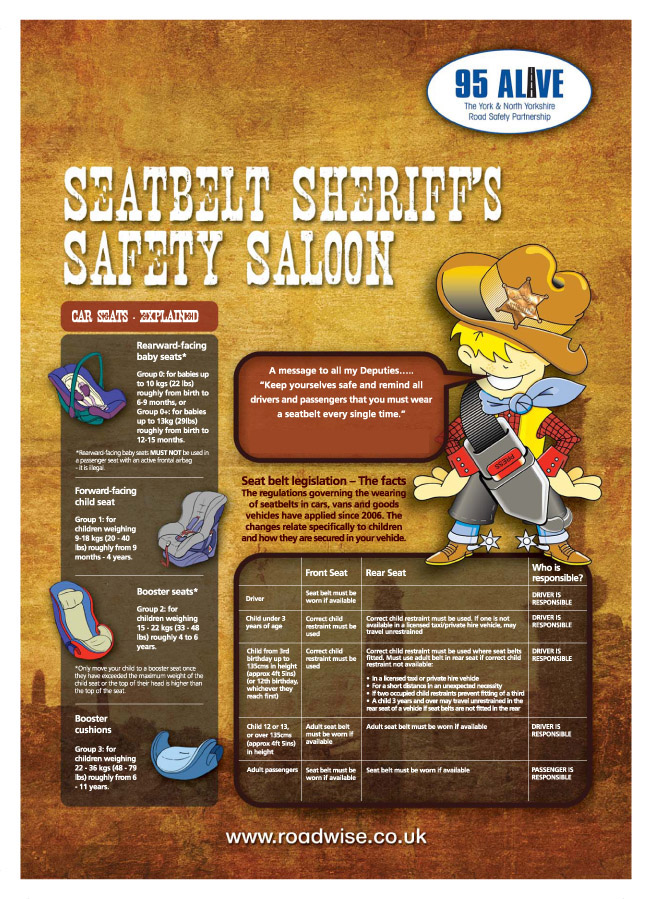- An unrestrained child could be killed in an impact at speeds as low as 5mph.
- A properly restrained child is 3 times less likely to sustain a head injury in a collision.
- In a collision at 30mph an unrestrained child would hit the front seat, and anyone in it, with a force between 30 and 60 times their own body weight.
The Law
It is the driver’s responsibility to ensure the child is in the correct child restraint, so if you are getting a lift with Aunty or Grandad, it is their job to make sure all is well, and it is also them that will face the penalties if the law is broken.
NEVER use a rear facing seat in a seat with an active airbag. The airbag must be switched off before use, best practice is not to use it in this seat even if switched off as it could be deployed due to an electrical fault during a collision.
Changes in Legislation
In March 2017 the law on buying booster cushions changed. Booster cushions offer no side impact protection and can even slip from underneath the child in a collision; it is strongly recommended you always use a high backed booster seat.
Under current UK law, all children travelling in a car must use the correct car seat until 12 years old or 135cm tall. In some European countries this height limit is 150cm. The new booster seat rules state that backless booster seats will only be approved for use for children taller than 125cm and weighing more than 22kg. Previously, children weighing as little as 15kg, that’s around three years old, could travel in backless booster seats. But many child car seat experts agree that this type of booster seat is unsuitable for such young children. A small child isn’t held as securely in the seat, the adult seat belt isn’t guided across their little body in the best way, and, most importantly, a booster seat offers no protection for a child if your car’s involved in a side-impact crash.
Buying
Although tempting to get a deal off the internet, the most important part is making sure the seat fits correctly in your car. A specialist retailer and a trained fitter will be able to try child car seats in your vehicle to ensure they fit correctly. Things like your car seat shape and profile, the position of the seatbelt’s anchorage point, headrests, underfloor storage lockers, all of this can limit your choice and mean some seats simply won’t fit your car.
It’s not just a case of plugging the seatbelt in, things need to be checked, for example, buckle crunch (where the belt buckle is the main point of contact with the seat and not the seatbelt webbing).
Once the fitter is happy the seat fits in your car, they will then get you to refit it, showing you the best way and highlighting anything of note.
To find out more about in-car safety for children visit www.childcarseats.org.uk which will provide you with information on the following:
- Carrying children safely
- Choosing the correct child seat and the various types available
- Using the child seat correctly
- The law regarding child seats
- Safety standards
-
Local help and advice available.

